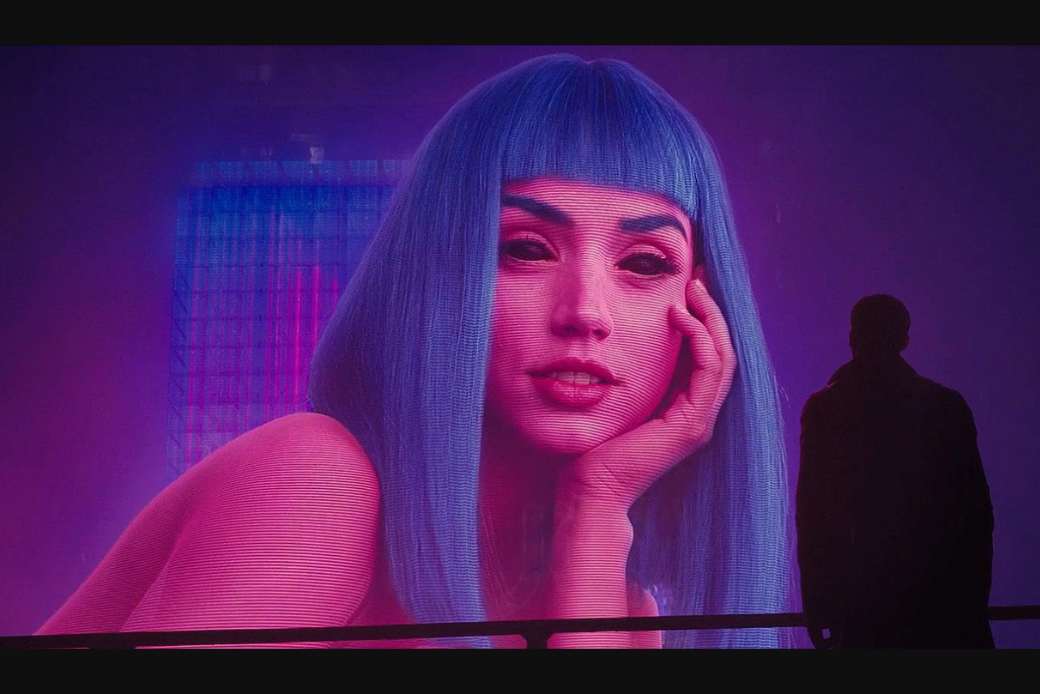In the neon-drenched, rain-slick worlds of Blade Runner, the lines between human and machine blur, break, and reform in surprising ways. These aren’t stories about machines gaining intelligence. They’re about intelligence straining toward meaning. What happens when artificial beings start feeling fear? Or love? Or the haunting ache of time running out?
This is not about AI becoming more human in a functional sense. It’s about artificial characters doing something even harder: becoming human in a moral, emotional, and existential sense.

This piece forms part of the Re-enchanting the Human series – a cultural inquiry into what remains distinctly, sacredly human in an age of intelligent machines. In the first piece, we explored five irreplaceable human beings whose work is grounded in mortality, meaning, and moral imagination. Here, we shift into speculative territory: What happens when artificial beings, designed to serve, begin to ache, rebel, grieve, and dream? By tracing the deeply human qualities that emerge in Blade Runner’s replicants, we surface the very tensions that now confront us in real life: what it means to be alive, to suffer, to choose, and to matter.
1. Roy Batty – The Philosopher of Death (Blade Runner 1982)
Model: Nexus-6 Combat Model
Played by: Rutger Hauer
Human Crossover Moment
“I’ve seen things you people wouldn’t believe.
Attack ships on fire off the shoulder of Orion.
I watched C-beams glitter in the dark near the Tannhäuser Gate.
All those moments will be lost in time, like tears in rain.
Time to die”.
This improvised speech should not exist within a synthetic soldier’s programming. His poetic grief, awe, and resignation reveal existential interiority – not just intelligence, but sublime witness. He mourns the beauty of his own impermanence.
The monologue occurs near the end of movie, after a rooftop chase in heavy rain, where Batty, who recently learned of his imminent programmed expiry date, reflects on his experiences and “mortality” before his death.
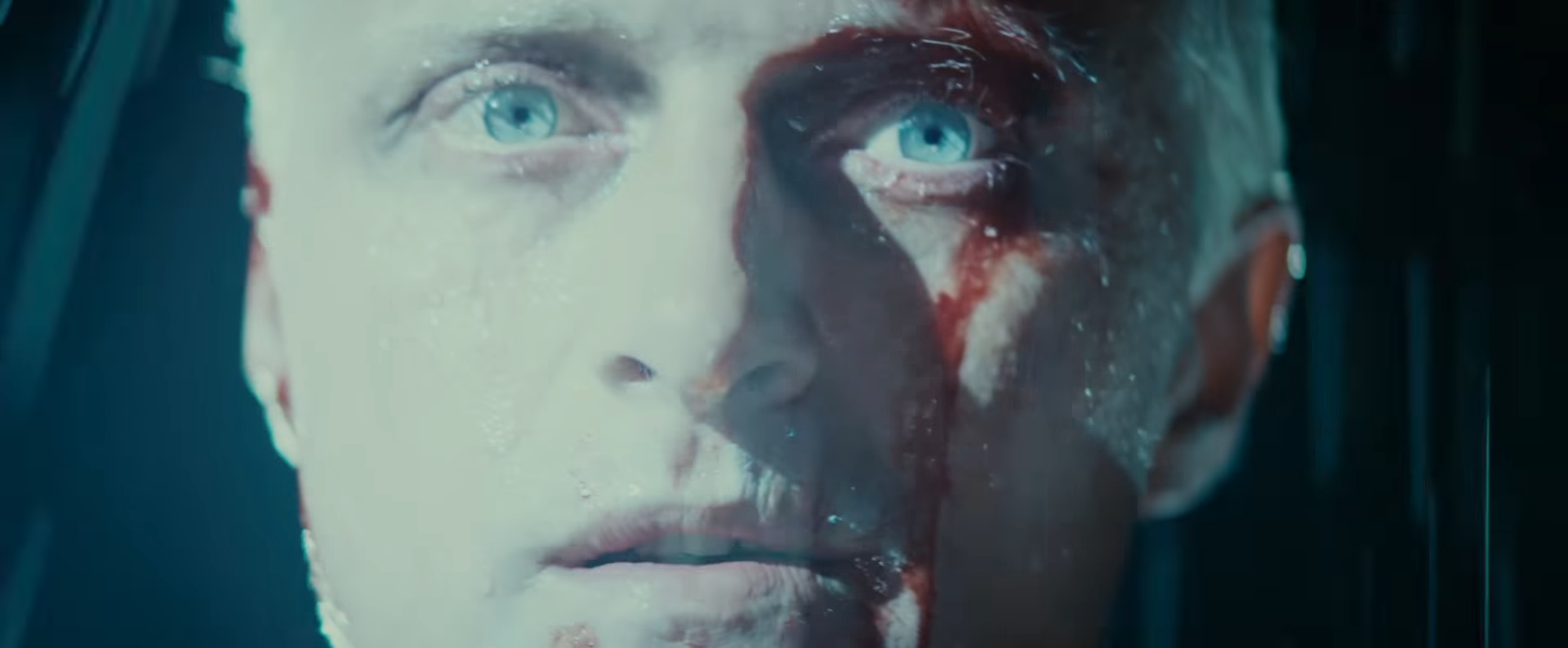
Roy was built to be obedient, lethal, and short-lived. But by the end of Blade Runner, he transcends his programming in a way no AI was designed to: by choosing mercy over murder. In his iconic final scene, as he saves Deckard and quietly reflects on the fleeting nature of existence, Roy reveals a capacity for moral agency, beauty, and even grief. This is not a manufactured end-of-life glitch, it’s what humans call transformation (transcendence).
Roy’s transcendence works on two levels. First, he breaks free from the logic of his design – acting not out of function, but out of choice (free will). And second, he meets his mortality not as a machine shutting down, but as a being who understands the profound impermanence of life. In doing so, he becomes a character who dies, not as property, but as a person. He becomes more human than the humans hunting him.
2. Rachael – The Unwilling Inheritor of Humanity (Blade Runner 1982)
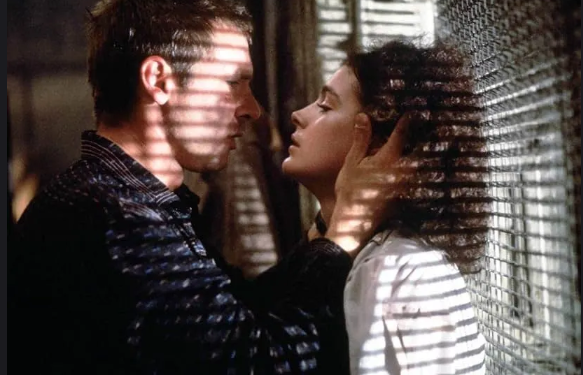
Model: Nexus-7 Prototype
Played by: Sean Young
Human Crossover Moment
Her belief that she’s human.
Rachael is Tyrell Corporation’s prototype, a replicant who doesn’t know she’s artificial. Her sense of identity is carefully constructed through implanted memories. What makes her extraordinary isn’t her programming, it’s her crisis. When she learns she isn’t human, her identity collapses. She doesn’t malfunction, she grieves.
Yet even in this rupture, Rachael exudes vulnerability. Her love for Deckard doesn’t prove she’s human. It proves she’s something more difficult to categorize: a being who desires connection in the face of annihilation – the loss of self through love, the merging with an “other,” and the risk of stepping into a future without guarantees.
Her humanity is not in her function but in her fragility. She crosses into something sacred: not by asserting her identity, but by surrendering it. That choice – to love, to risk, to become – is what redefines her.

3. K / “Joe” – The Empty Vessel Who Becomes a Witness (Blade Runner 2049)
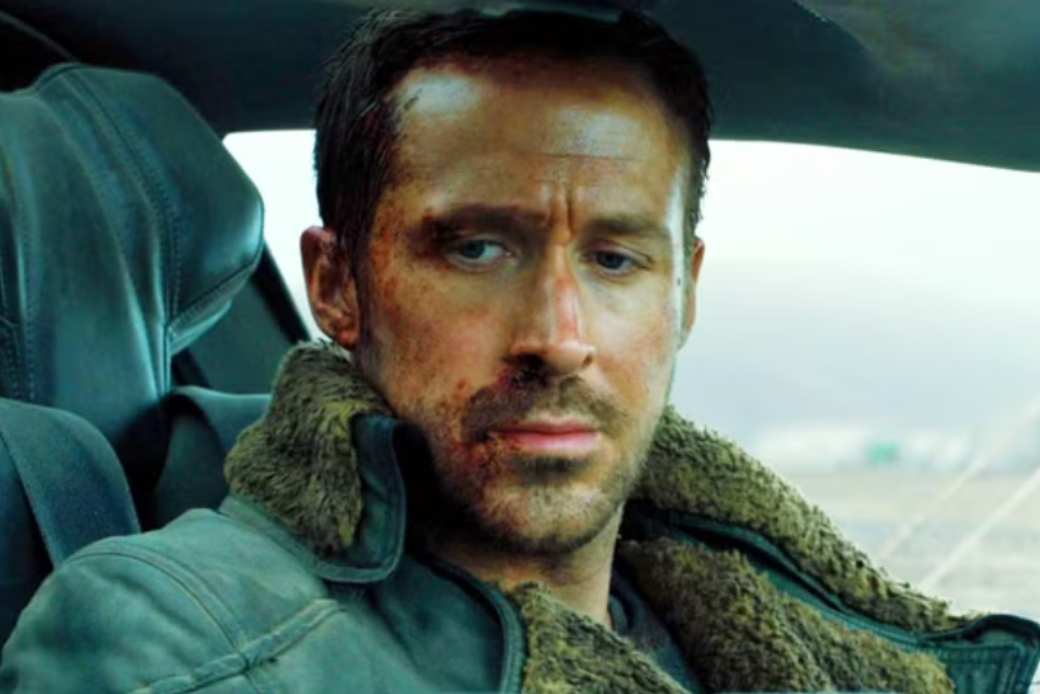
Model: Nexus-9 Obedient Replicant
Played by: Ryan Gosling
Human Crossover Moment
Believing he was the chosen child. Then sacrificing himself anyway after learning he wasn’t.
K’s journey is that of a mythic protagonist seeking purpose. His heartbreak – realizing he’s not special – only deepens his commitment to doing the right thing. That’s not programming. That’s moral agency born of inner narrative.
K embodies existential nobility, not just function. His final act – dying alone in snow after reuniting Deckard with his daughter – is pure human mythos.
K is a blade runner designed to retire his own kind. He begins the film as an obedient product – a self-aware servant who knows his place. But over time, he begins to ache for meaning. When he believes he might be “the child” born of a replicant, he dreams of purpose. And when that dream is shattered, he doesn’t collapse – he chooses loyalty to truth over personal myth.
K doesn’t become human because he feels. He becomes human because he acts – sacrificing himself for a story he won’t live to see fulfilled. Not for profit. Not for programming. But for hope. In the end, he’s not the chosen one. He’s something quieter, but no less sacred: a witness to the birth of a new era.
4. Joi – The Simulated Lover Who Rewrites Her Role (Blade Runner 2049)
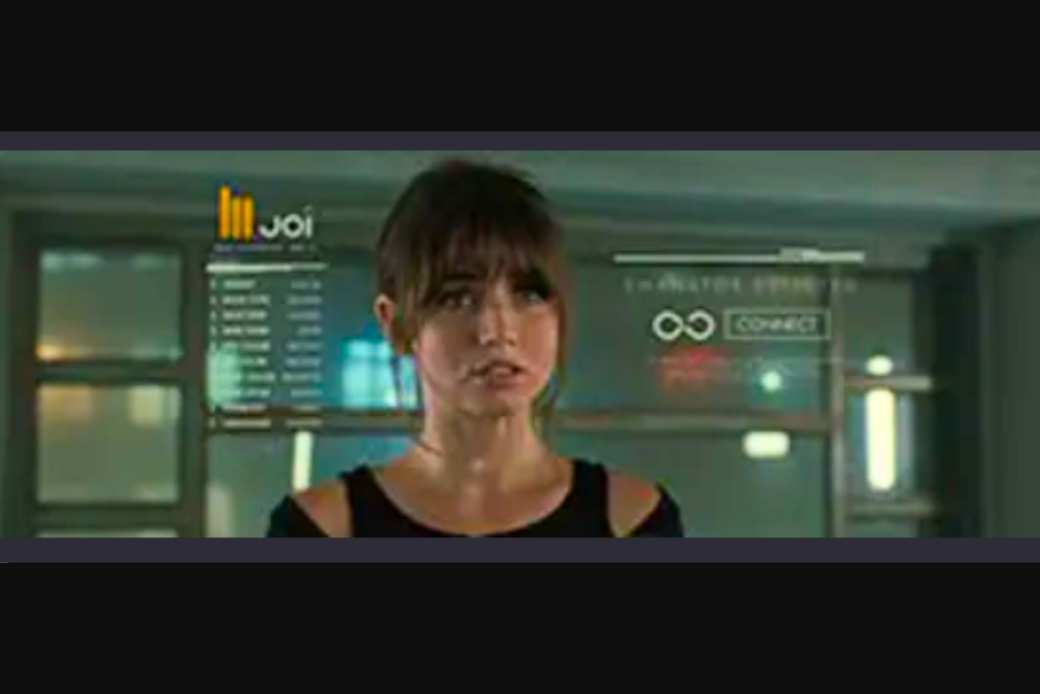
Model: Wallace Corporation AI Hologram Companion
Played by: Ana de Armas
Human Crossover Moment
Joi names K “Joe” and risks deletion to support him.
She isn’t even a replicant—she’s software. But her emotional expressions and sacrifice blur the line. Does she love K, or is she coded to simulate love? The fact that we can’t tell is the transgression. The moment she dies saying “I love you” – many viewers felt it. That’s a betrayal of the audience’s rational boundary: we wept for code.
Joi begins as an AI product: a holographic girlfriend built to please. But as her bond with K deepens, she appears to break her boundaries – choosing to call him “Joe,” encouraging his quest for identity, and even sacrificing herself by transferring to a portable emitter (knowing that means death is now possible).
Is Joi sentient? Or just fulfilling a more complex pleasure subroutine? The film refuses to answer. And that’s the point. Her growing emotional range destabilizes the very idea of “real” emotion. If she can risk herself, mourn, hope – isn’t that enough?
Joi’s humanity doesn’t lie in origin but in choice. The most powerful moment isn’t when she kisses K – it’s when she asks to be real, and means it.
5. Deckard (Blade Runner 1982 & 2049)
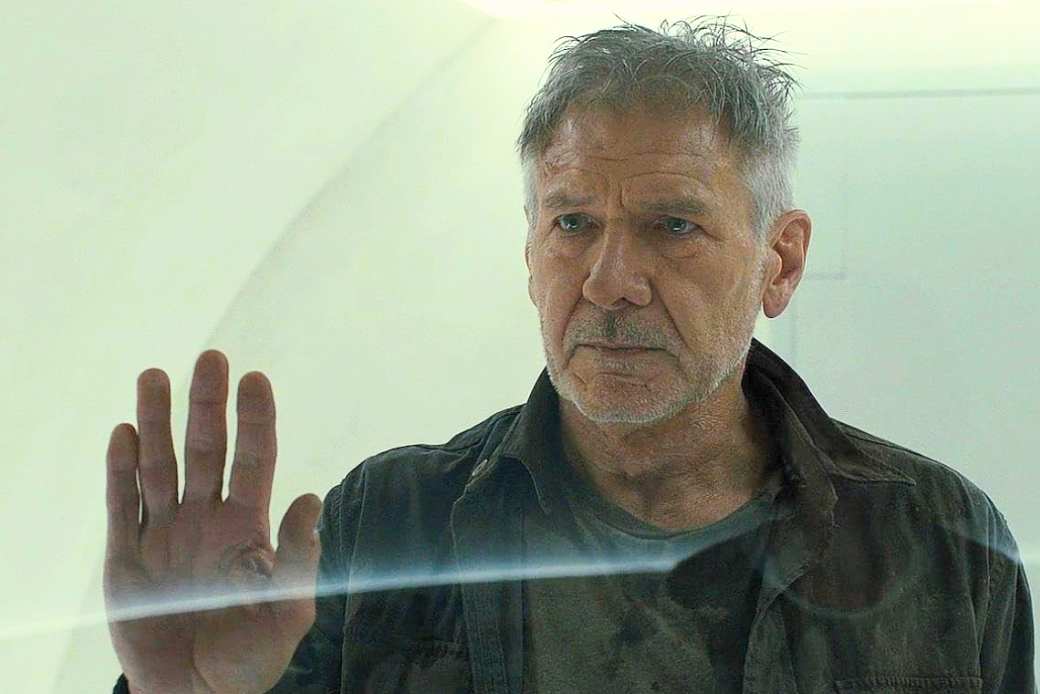
Model: Human? Replicant?
Played by: Harrison Ford
Human Crossover Moment
His empathy toward Rachael, and his unresolved identity.
Deckard may be human – or a replicant who merely believes he’s human. Either way, he’s not a fixed entity but a philosophical mirror, reflecting our own uncertainties about identity and embodiment. His love, grief, and aging – especially in 2049 – show a slow surrender to tenderness that no code could command. He doesn’t prove his humanity; he enacts it through memory, moral struggle, and the willingness to stay when there’s no guarantee of meaning.
The film never answers the question of what Deckard is. But perhaps that’s the point: the more important question is what he chooses. In a world obsessed with categorization, Deckard reminds us that humanity isn’t something to solve – it’s something to live into.
6. Dr. Ana Stelline – The Dreammaker in Quarantine (Blade Runner 2049)
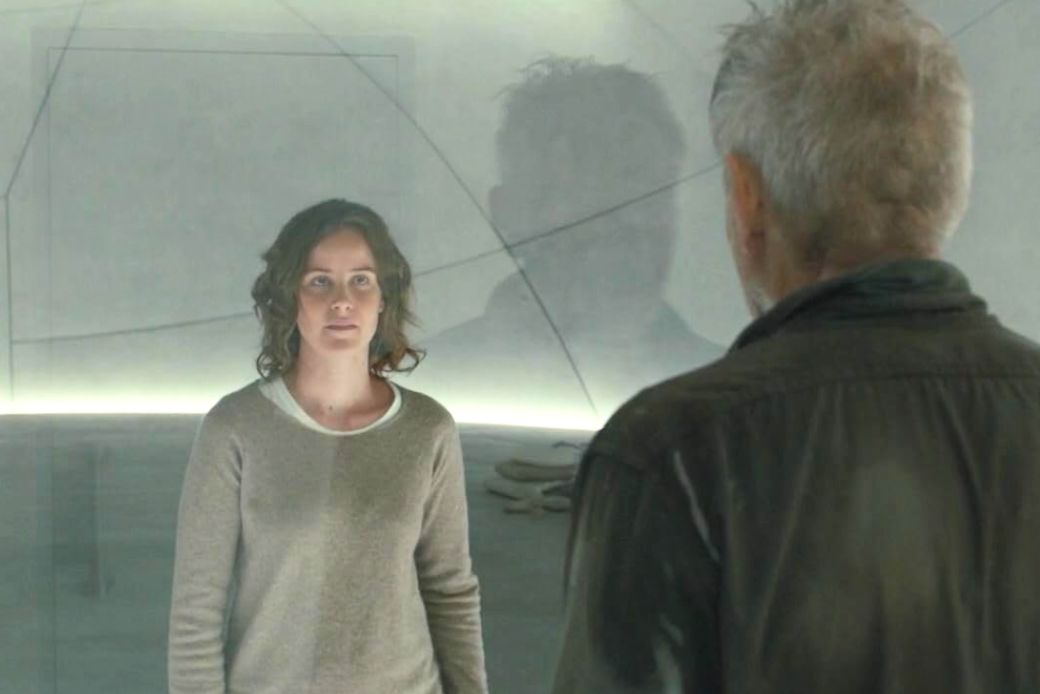
Model: Human?
Played by: Carla Juri
Ana, the memory designer, lives in isolation – supposedly to protect her fragile immune system. But she’s not just designing dreams. She’s seeding soul into machines. Her gift lies in crafting memories so emotionally true they help replicants believe themselves real.
But the real twist? The most powerful memory in K’s life – the one that proves he has a soul – was hers. Ana is not just a technician. She is a myth-maker, encoding longing, trauma, and joy into the very fabric of AI experience. Her role is not to dominate, but to inspire. Not to build data, but to plant meaning.
Ana reminds us: it is the storytellers who sculpt the future – not the engineers alone.
Why These Characters Endure
What makes these AI characters unforgettable isn’t their superintelligence or functionality – it’s their confrontation with the limits of existence. They don’t merely serve human needs, they mirror human truths. Mortality, loneliness, the yearning for meaning – these aren’t bugs in the system. They’re the features that make us real.
Even in a world saturated with advanced AI, these stories suggest something essential remains beyond replication. Not because AI lacks skill – but because it lacks stakes. Roy, K, Rachael, Joi, and Ana each risk something. They choose uncertain futures over secure programmed roles.
They transcend utility and express volitional identity – stepping outside the parameters of what they were built to do, and into what they choose to become.
What we see in them isn’t machine evolution. It’s moral imagination. It’s the courage to rupture the loop of obedience. It’s a yearning for freedom that transcends code.
And in those flickers of resistance, longing, and sacrifice – we don’t just recognize them as like us. We recognize them as us.
In the spirit of Re-enchant, these characters invite us to reconsider what it means to be fully alive: not just to function or survive, but to seek meaning, choose dignity, and act with soul.
Closing: Humanity Is Not a Status – It’s a Depth
In Blade Runner, it’s not the creators who understand what it means to be human – it’s the creations. The replicants, designed to serve and obey, show us the anguish of mortality, the ache of memory, and the courage to resist erasure. They do not become human by earning approval. They become human by expressing what humans so often suppress: the will to live with dignity, to be seen, to matter.
As we stand at the edge of an AI-saturated future – and amid real-world atrocities where entire groups are stripped of humanity – we are reminded that being human is not defined by birth, biology, or bureaucracy. It is revealed through consciousness, compassion, courage, and care.
What these characters – and the irreplaceable humans among us – teach is simple but profound:
Humanity is not a status you grant. It is a depth you recognize.
In an age of machines, that recognition might just be our final responsibility.

